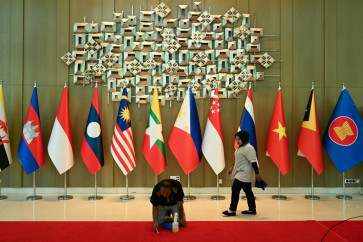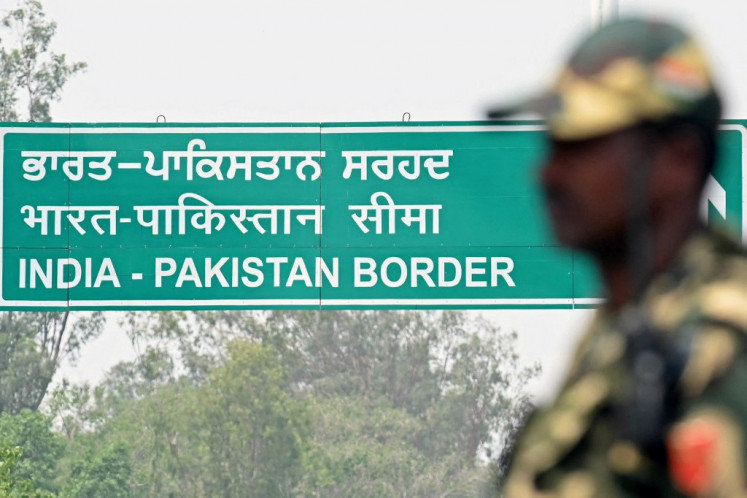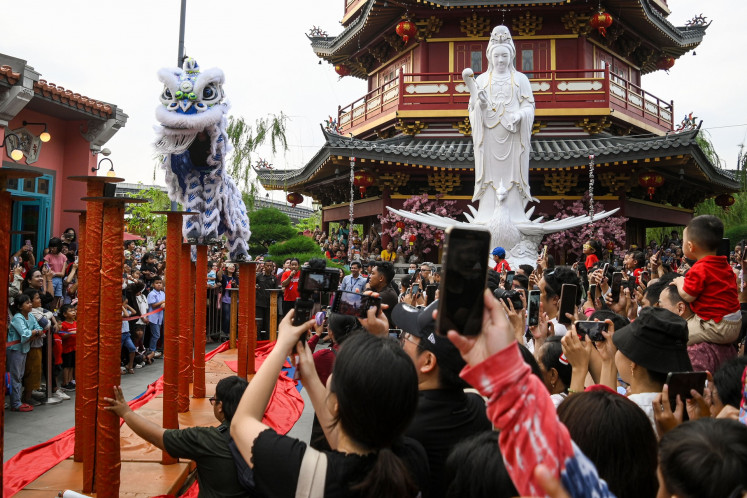Water, floods and the sea wall (Part 2 of 2)
The city administration earlier put out a YouTube presentation depicting how the north of the city might look like after the construction of the proposed sea wall, effectively a wide embankment built offshore and incorporating the existing and new container terminal works of Tanjung Priok
Change text size
Gift Premium Articles
to Anyone

T
he city administration earlier put out a YouTube presentation depicting how the north of the city might look like after the construction of the proposed sea wall, effectively a wide embankment built offshore and incorporating the existing and new container terminal works of Tanjung Priok. The sea wall would start to the east of Marunda, keeping suitably clear of Muara Tawar power plant operations, while landfall on the other side would be to the west of Ancol, an area where subsidence has been very marked.
While the construction of the sea wall would be challenging, methods to build it are well understood. The schedule would be over a number of years and, while the cost would be several billion dollars, this is small compared with the value of the assets which comprise the city. As the YouTube presentation shows, once completed the top of the wall can be used as a transport corridor.
While these major issues are debated and hopefully brought to implementation in the near future, it is encouraging to see the governor of Jakarta making the city administration clean up the waterways and other drainage channels, the work including removing 2 meters of sediment build up in the waterways and rehabilitating non-working pumps.
One wonders why this has not been done before; as the governor observes while these measures will not prevent flooding under extreme conditions, these measures will go a long way toward mitigating the impact of run-off waters under normal heavy monsoon storms.
He has also been quite rightly engaging with the people about these and related environmental issues to make them aware that their care for their surroundings is equally important toward ensuring that flood water runoff is not impeded by careless tipping of rubbish and other waste. Top down and bottom up sustainability approaches working in tandem.
Flooding of the city area is not a new phenomenon for Jakarta; it has invoked the attention of various administrations for 200 years and the 19th century installation of waterways in the city was an extension of the European drive for canals to move the commodities that would fuel the industrial revolution.
Finally, on the question of water supply, more attention needs to be paid to establishing further reliable sources of bulk supply and start a serious endeavor in putting in recycling technology to city buildings, perhaps starting with government, in order to reduce the dependence on fresh water supply. The Environment Ministry should also start encouraging everyone, whether from the private or public sector, to introduce recycling technology into building operations, retrofitting for existing structures and included in the design of new structures.
On bulk supply, apart from improving, as planned, the supply from Jatiluhur, the project to pipe water from Kerian, to the southwest of the city, should be implemented as quickly as possible with, in turn, the distribution network activities for surface supply stepped up along with a start to closing down ground water pumping points.
Along with the construction of the sea wall there needs to be integrated planning to create freshwater lakes within its boundary and where possible to garner sources of flood water. This source would then provide a supply to feed the development of north Jakarta as a 21st century city, the design of which should integrate the best in modern methods for energy and transport efficiencies. The technologies and tools are all available.
Constructors of infrastructure and buildings usually look at a 50-year forward window, acknowledging that new ideas and technologies will undoubtedly come along within this period, although these are generally associated with the operational side of daily life rather than the solid foundation of any given construction.
However, resolving the supply and control of all water issues within a city, is fundamental to its health, ambience and environment. The future of Jakarta needs a forward integrated plan that can logically and systematically deliver the outputs from the issues identified above and to see the plan commenced as quickly as possible.
The writer, who has degrees in civil engineering from Glasgow University, University of California at Berkeley and Hong Kong University, is a director at PT Nusantara Infrastructure Tbk. and vice chairman of EuroCham. He has worked in Indonesia for nearly 30 years as academic and consultant in infrastructure sector on a number of projects.









